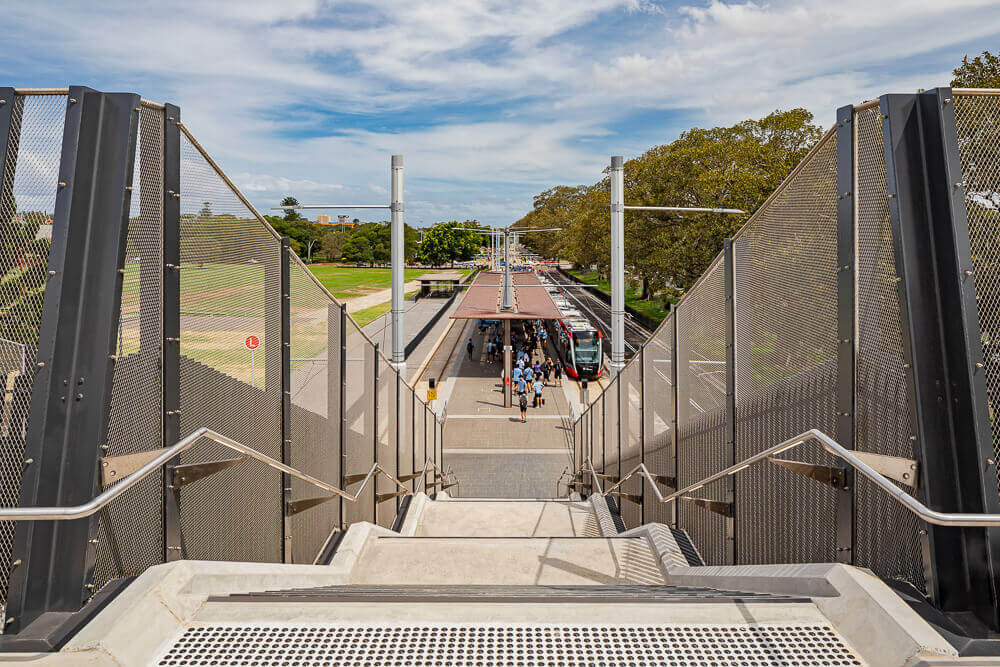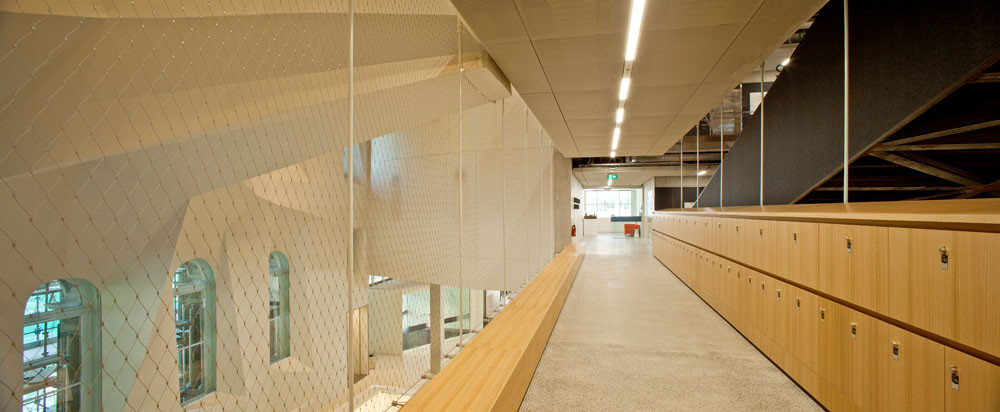Both stainless steel and glass can be used to create contemporary transparent balustrades and barriers. However, the two materials perform quite differently in several ways.
Here are nine important differences between the two.
1. Span/sheet size
Stainless steel vertical cables and Webnet mesh can accommodate very large spans. This means they can be used to create uninterrupted full-height barriers over multiple levels, such as in a multi-storey atrium.
The span and sheet-size of glass is poor by comparison, and sheet are also much heavier to carry and transport.
2. Customisation
Stainless steel barrier materials are remarkably flexible and lend themselves to high customisation. Wire-rope cables for example can be cut to different lengths and formed into various thicknesses. Pre-formed mesh such as Webnet comes in a variety of panel and aperture-opening shapes and sizes.
The nature of these materials makes them adaptable to all kinds of geometric shapes, including spirals, curves and non-uniform structures.
Glass panels on the other hand, being solid and rigid, are less customisable. They also tend to suit more linear or uniform structures and are generally not as adaptable to highly unique designs.
3. Longevity and durability
Stainless steel wins this race hands down. It can last up to 25 years when used as a balustrade material, compared to glass which lasts around 5-10 years.
4. Airflow
While both materials let the light in, when it comes to airflow it’s a different matter. Being a solid material means that glass doesn’t facilitate airflow the way that stainless-steel cable or mesh does.

5. Ease of installation
Both materials perform well when it comes to installation.
However, unlike glass, Webnet mesh does not require a sub-frame, and it is also lighter in weight and is less solid and bulky. These factors make installation of Webnet quicker and easier.
6. Cleaning
While both materials are low-maintenance, glass requires more cleaning. Glass tends to attract not only smudges and fingerprints but also dirt, dust and bacteria. When this happens, the material can also lose some of its transparency. This means that a glass balustrade will require regular cleaning and disinfecting to keep it performing well.
Stainless steel on the other hand requires very little in the way of ongoing maintenance or cleaning.
7. Fire resistance
Stainless steel is by nature highly fire resistant, so there is no need to take extra precautions in this regard.
Glass balustrades can also be made fire-resistant through coating or layering, but this will increase the cost.
8. Climbability
Barriers on high platforms such as atriums and footbridges must be made non-climbable.
This is made possible by using stainless steel mesh with an aperture-opening size of less than 40mm to prevent footholds, or by installing full-height barriers – such as on atriums.
It is more difficult to make glass balustrades non-climbable though. For example, when glass is used on an atrium, it needs to have large panels (at least 1,200mm in size) installed to prevent climbing. This adds considerably to the cost and difficulty of installation.
9. Cost
Stainless steel compares favourably to glass in terms of cost. For example, Webnet mesh costs between $150-$650 per sqm.
Glass on the other hand can cost as much as $1,000 per metre for railings and $400-$800 for barriers.
Get in touch
The reason we use Jakob’s stainless-steel products in our commercial balustrade installations is because of their high performance, transparency, cost efficiency and great looks. Contact us to find out more or to discuss your project idea.







































